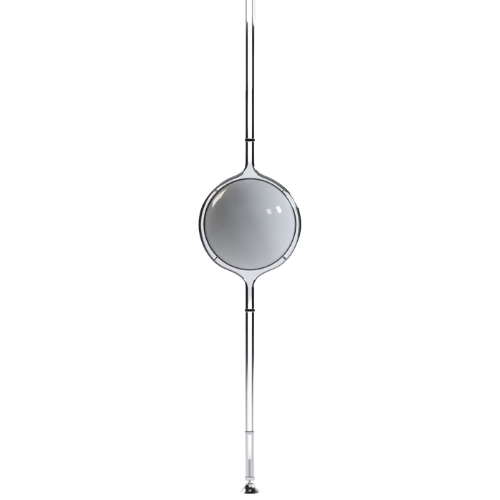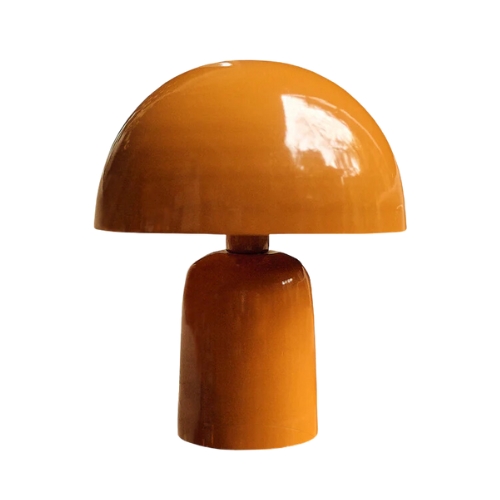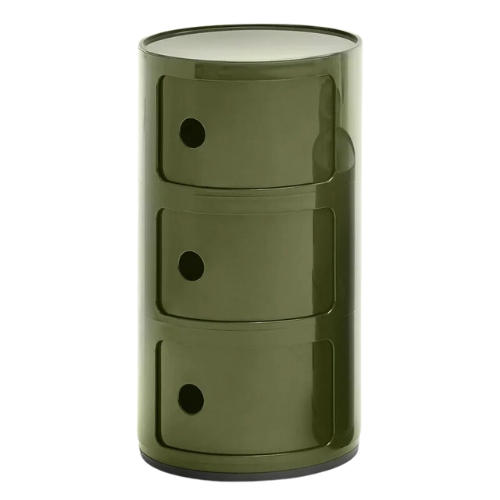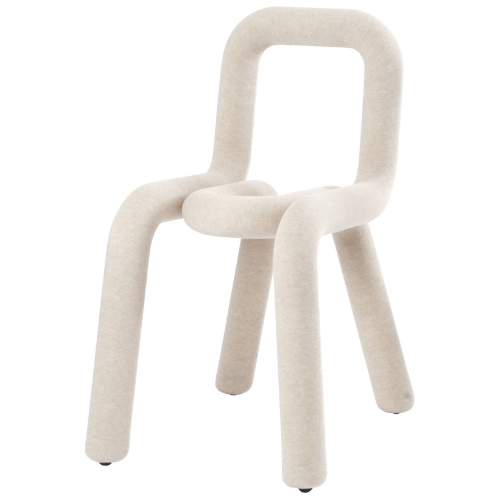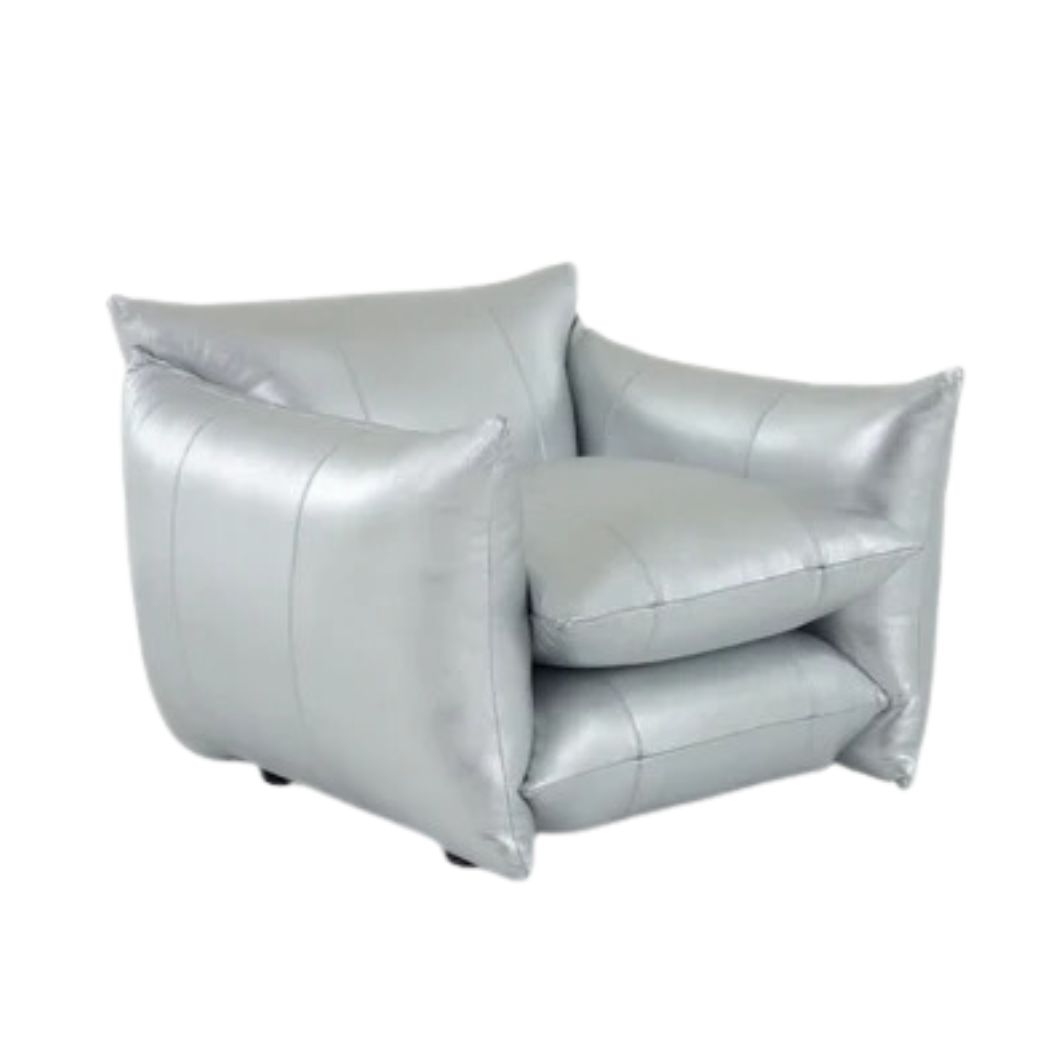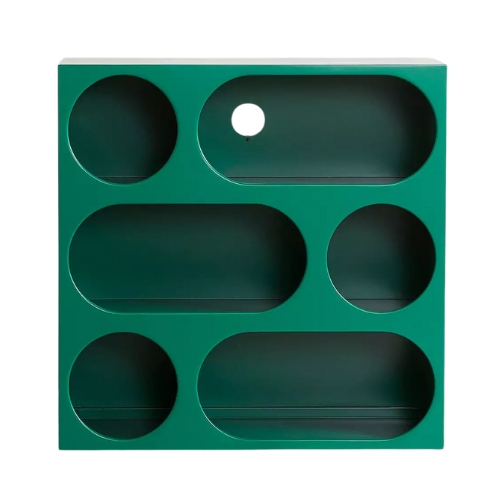"Experimental, Futuristic, and Other-Worldly" — There's a Good Reason Space Age Interiors Are at the Fore of Design Right Now
This futuristic interior style is the sleek sister of mid-century modern design — think glossy surfaces, chrome accents, and lamps that wouldn't look out of place on a Mars colony
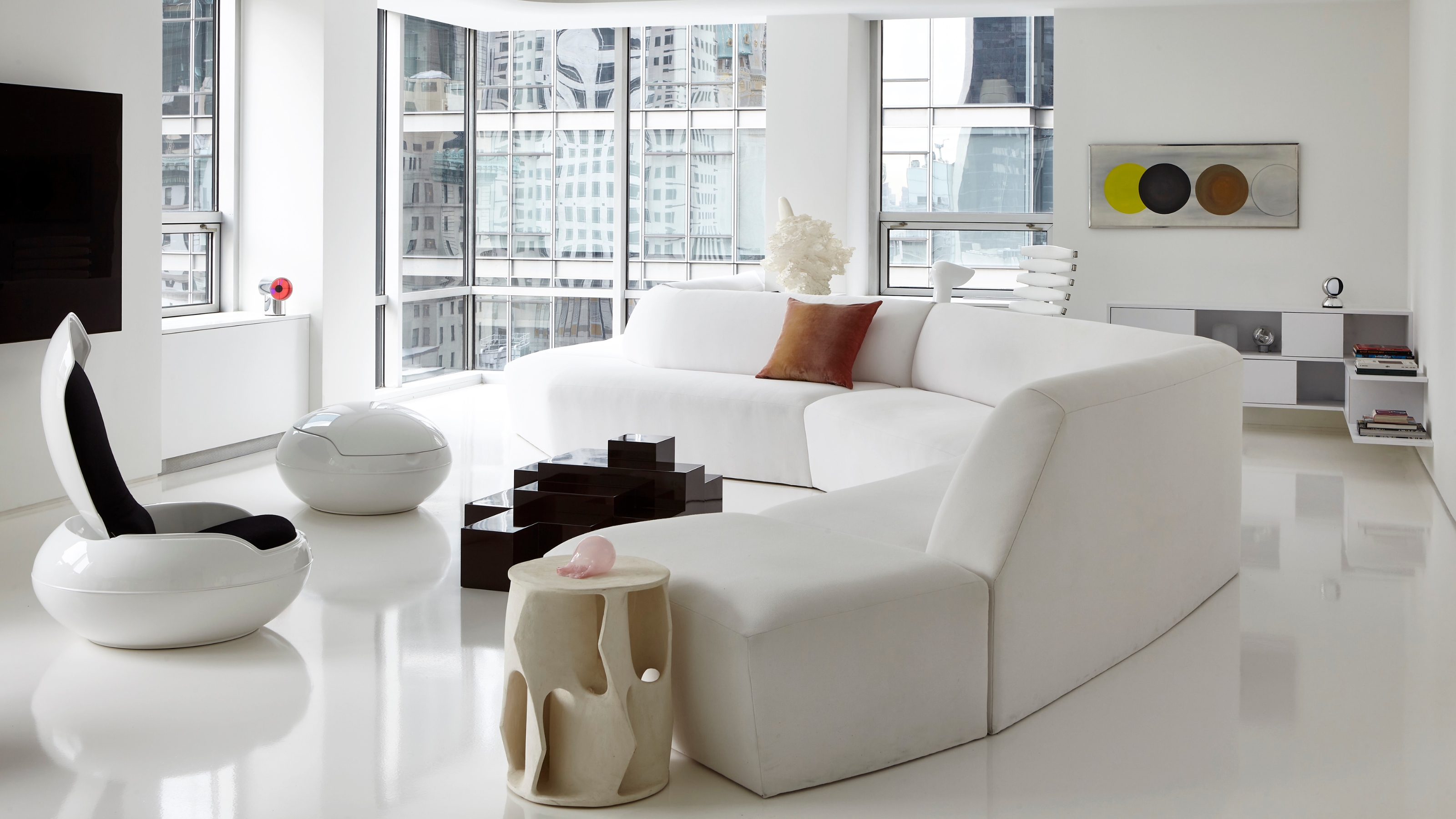

Some of the most beloved interior designs are influenced by the styles of the 1960s and 1970s. Culture at this time was going through a period of revolution and reform, and in home design, this led to a fusion of innovation and visionary aesthetics. Bold colors, materials, and shapes were the ethos of interior design at the time (much like what we see coming back today). However, there was no influence so cosmic as the world's launch into space exploration. Known in interior design as the birth of Space Age interiors.
Like its namesake hints, the Space Age interior design style spawned from the excitement around the space race and the cultural development happening as countries raced to land on the moon. That sense of futuristic technology and experimentation bled into how designers imagined interiors. If your mind is taking you to sleek, white egg chairs and chrome dining tables, then you are in the right place.
It's seemed, for the longest time, a bit of a retro throwback, so why (I wonder) are designers starting to turn to this irreverent, sci-fi-esque source of inspiration. "Right now, things in the world seem to be regressing — in politics, culture, and society in general, there's a sense that those futuristic ideals many people have always dreamed of are being stripped away," Hugh Metcalf, editor of Livingetc says. "I think the rise in Space Age interiors is a reaction to this — it's this sort of archetypal Utopian aesthetic which once would have felt a little cliché, but now feels like an antidote to the world outside."
To help get to grips with the re-emerging trend for Space Age interiors a little bit better, I've taken a deep dive into everything you need to know and how to get the look in contemporary design.
What Is Space Age Design?
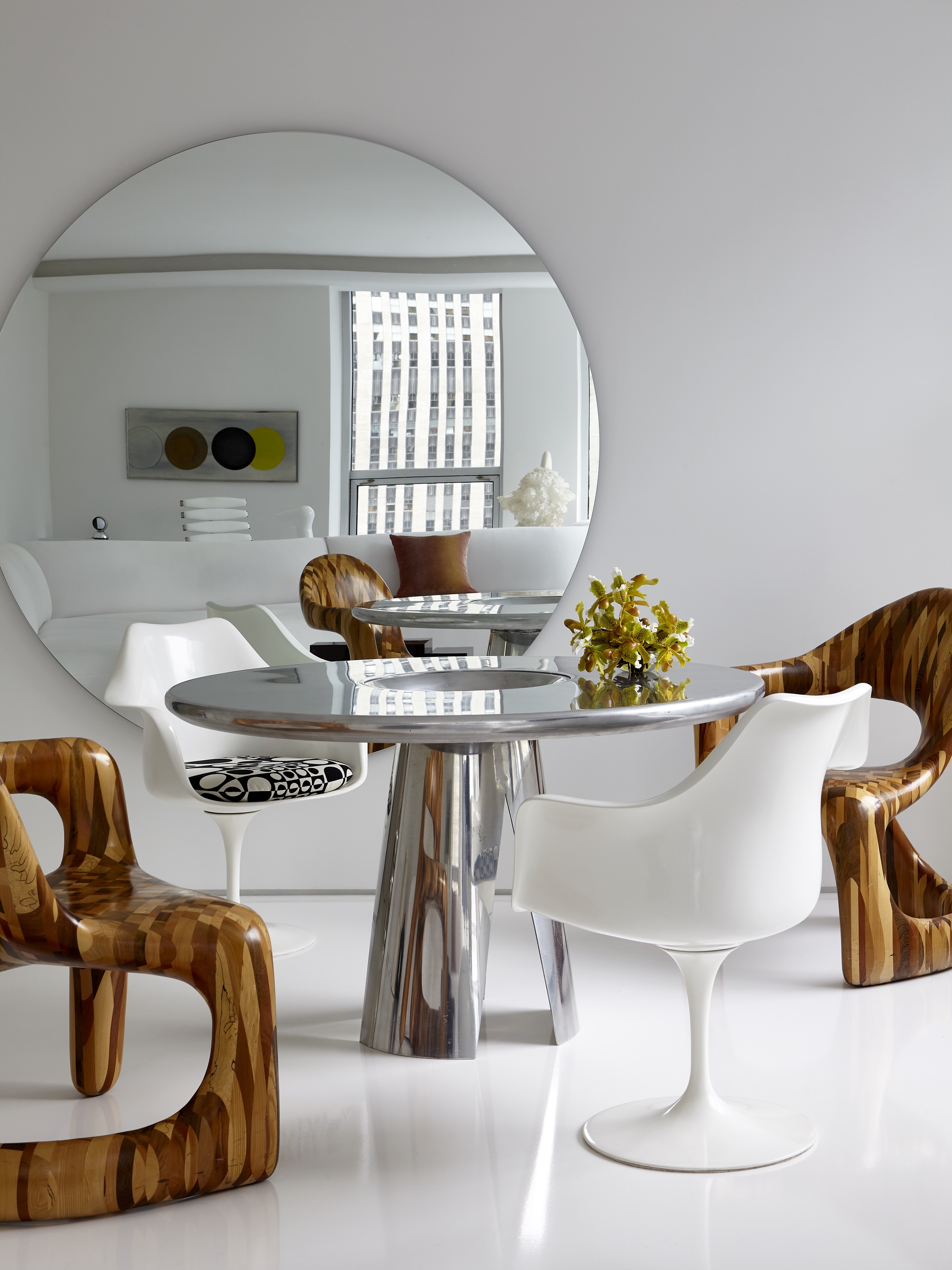
The mix of uniquely-shaped dining chairs and chrome finishes is a perfect display of Space Age style.
Given that both interior design styles were born in the middle of the century, Space Age design is closely related to mid-century modern design. The two aesthetics share common color palettes, materials, and silhouettes. Yet Space Age interiors have a futuristic and sleeker edge to them, that mid-century modern furniture sometimes lacks.
Kerry Offsey, director at New York and LA-based interior design studio, Hines Collective, explains, "Mid-century is rooted in practicality and organic materials with a more timeless and effortless design. It is a refined simplicity of the present. Space Age is more experimental, futuristic, and other-worldly. It evokes an excitement of what is to come, or could be." With Space Age interiors, there is a bit more room to experiment with your more outlandish design ideas, and embrace the unexpected.
At its core, Space Age design is often characterized by sleek, curved forms, glossy and reflective surfaces, and innovative materials. "There is a sense of weightlessness, movement, and forward-thinking creativity," says Kerry.
What Are the Characteristics of Space Age Design?
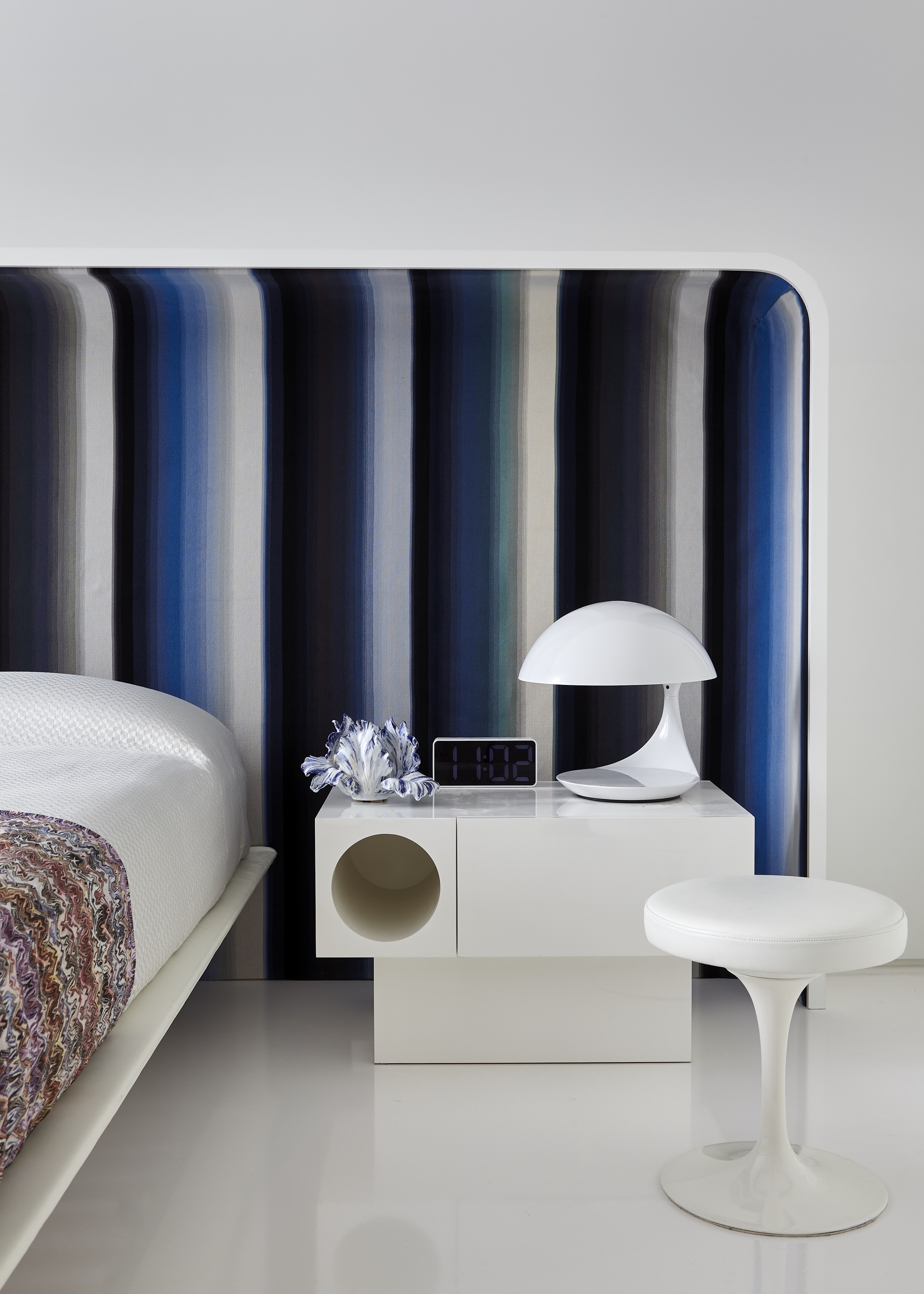
An otherwise all-white bedroom is given bold space age character with this futuristic extended headboard and mushroom table lamp.
So what characteristics should you look for? Space Age design often incorporates smooth, glossy, reflective surfaces and innovative materials like fiberglass, acrylic, molded plastics, and chrome metallic finishes. Each of these materials leans into that an avant-garde quality and a high-tech aesthetic.
As mentioned earlier, the motifs take cues from the vision of space travel and science fiction, which are just as fantastical as you would imagine. "Think pod and egg-like shapes, spherical cut-outs, floating furniture, and fluid continuous lines," says Kerry. She adds "The backdrop is often stark whites, silvers, and deep blacks, with bold accents layered at the forefront."
A good example of this would be a monochromatic color scheme for the backdrop of a room, with bold pops of color and tactile materials featured throughout the furniture and wall art.
However, "It’s not just about futuristic objects — it’s about designing environments that transport you elsewhere, that spark the imagination," says Maria Vittora, interior designer at Milan-based interior design studio, Casa Ornella Studio.

Maria is an Italian designer based in Milan. Her Project, Casaornella, debuted at Milan Design Week in 2023; a project she conceived and lead. Maria explores new forms of hospitality and living experiences, weaving together design, art, food, and fashion. "A constantly evolving laboratory that welcomes cross-pollination and fosters connections," says Maria.
How to Adapt Space Age Interiors for the Contemporary Home
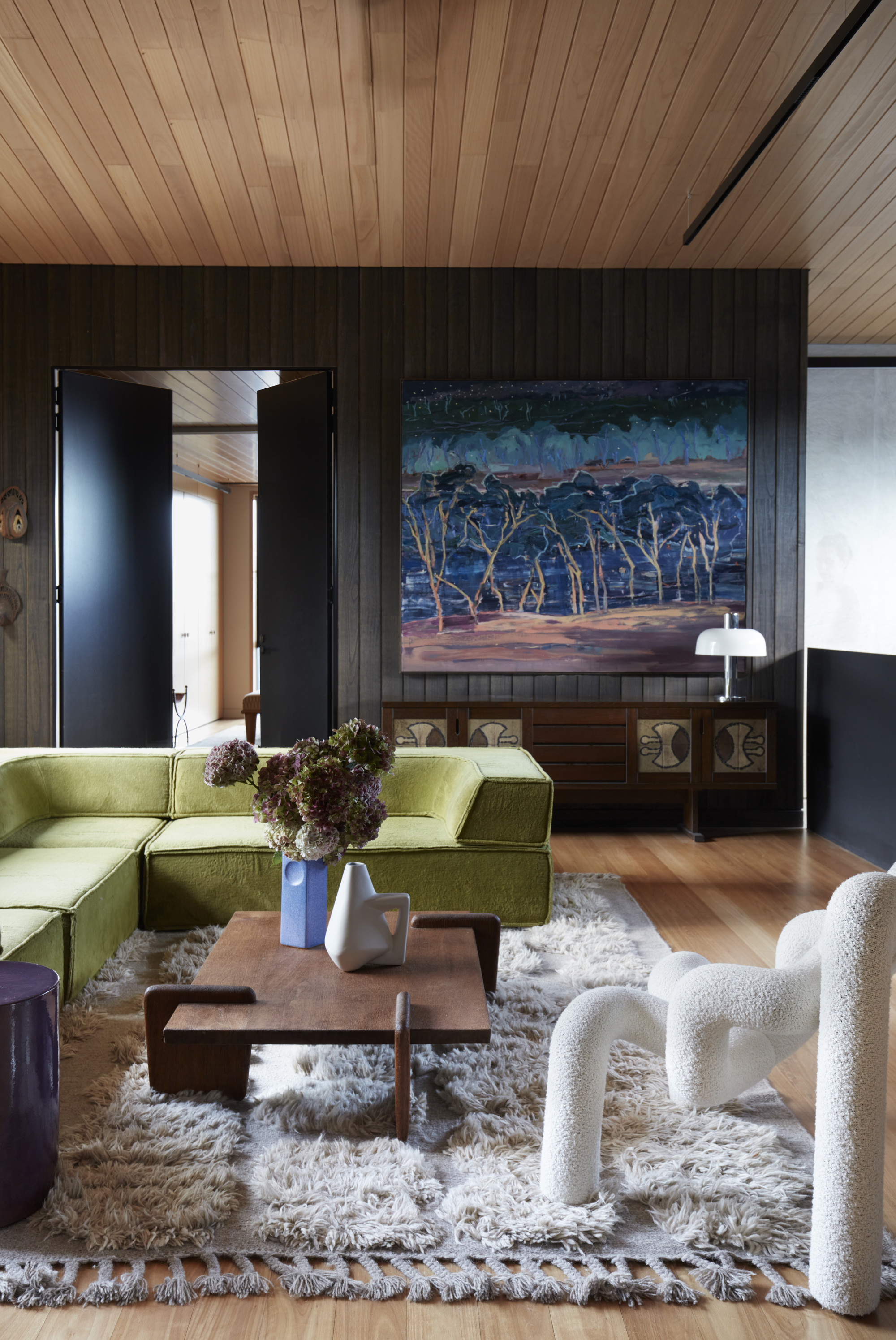
The mix of futuristic furniture and traditional materials makes this living room an interesting example of a modern take on space age interiors.
Though traditional space age interiors scream of '60s and '70s influence, a refined and slightly subdued iterations has cultivated itself in today's interior design trends. "Today's interpretations layer in more sophistication and influence from the design eras that succeeded the Space Age design period. The exaggerated curves and playfulness of the Space Age era are more streamlined and softened today," says Kerry.
Technology that was once a future vision is now heavily integrated into the aesthetic, making it less fantasy and more function this time around. Like most styles that come back in fashion, embracing modern retro décor is all about a balance of what is old with what in fashion today.
"Space Age interiors today are no longer just a nostalgic tribute to the futuristic curves and glossy materials of the ‘60s. It’s a language that evolves, blending past and future with contemporary irreverence," says Maria. Today, we see it in organic volumes, high-gloss plastics mixed with raw materials, and chrome surfaces interacting with soft textures. "It’s an aesthetic that is both bold and sophisticated, full of dynamic lines, saturated colors, and a constant sense of movement," says Maria.
Starting to get the picture? My obsession with modern Space Age interiors started when I saw Residence Supply's floor-to-ceiling lamp (and I haven't stopped thinking about it since). I've shown it below, along with a few other décor ideas to get your futuristic furniture shopping started.
Shop Space Age Décor
How to Style Modern Space Age Interiors
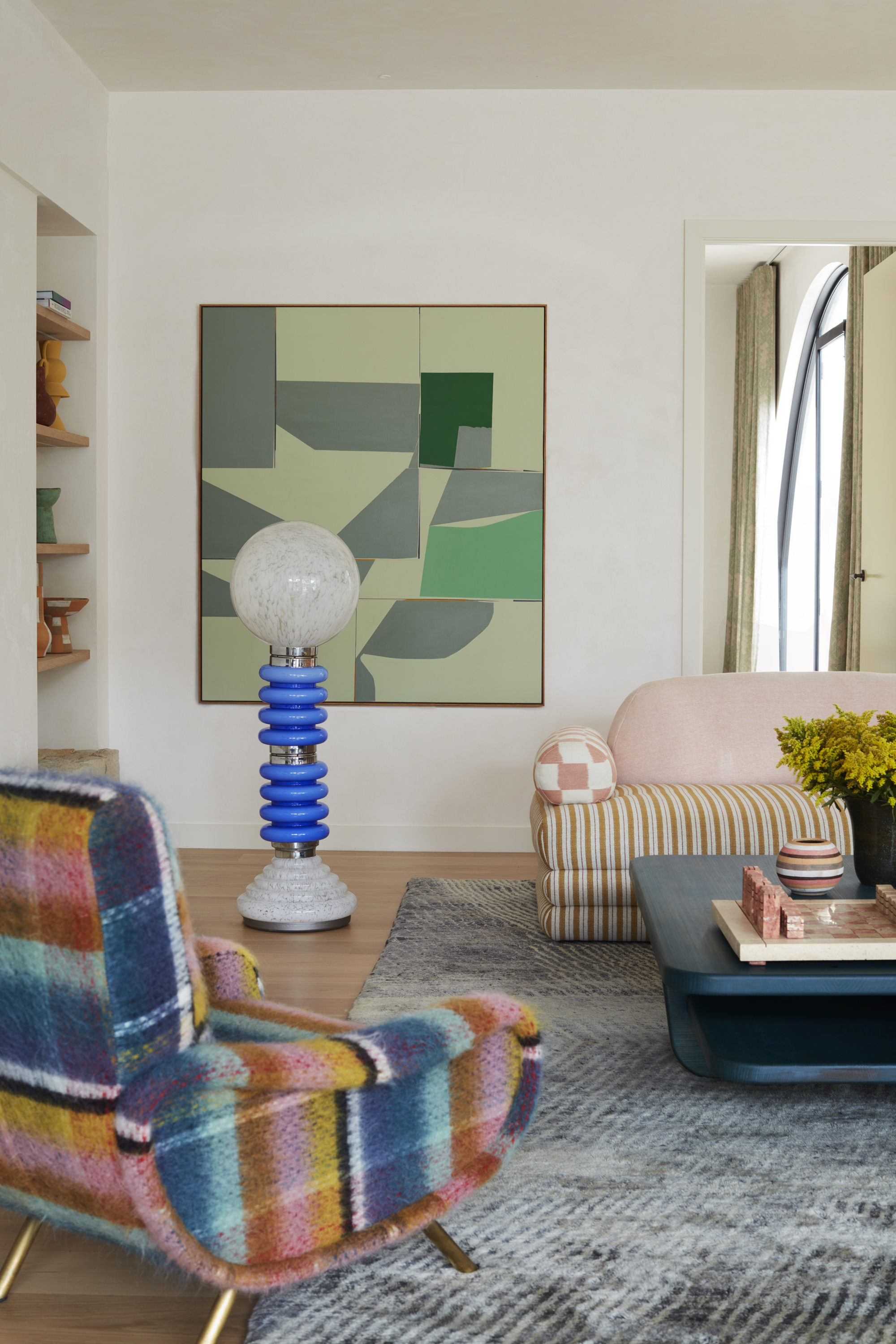
This living room expertly combines space age interiors with mid-century design and modern influence. The bright colors are a nod to the retro influence, but still feel fresh.
As intimidating as space age interiors may sound, all you need to succeed at the look is to embrace a little fun in your home. "It’s a game! Space Age design shouldn’t be rigid; it should be an experience. A space age piece — whether it’s an egg chair or a chrome mushroom lamp — always has an exaggerated, almost theatrical personality," says Maria.
Incorporating unexpected pieces — like the wrong shoe theory for interiors or my personal favorite, the jolie-laide trend — have become increasingly popular in contemporary design. Space Age interiors feel perfectly on-brand when it comes to playful moments and embracing a home with personality.
A rather pared-back living room can call to the cosmos by simply adding a futuristic floor lamp or a 'strategic neon' accent piece. Maria says, "Placing space age in a more neutral environment is like flipping a visual switch, creating a vibrant contrast full of irony."
You don't have to completely remodel your home to add a nod to the space age era. "It’s that one detail that makes all the difference, that turns a room into a visual manifesto of energy and dynamism," says Maria.
Be The First To Know
The Livingetc newsletters are your inside source for what’s shaping interiors now - and what’s next. Discover trend forecasts, smart style ideas, and curated shopping inspiration that brings design to life. Subscribe today and stay ahead of the curve.

Olivia Wolfe is a Design Writer at Livingetc. She recently graduated from University of the Arts London, London College of Communication with a Masters Degree in Arts and Lifestyle Journalism. In her previous experience, she has worked with multiple multimedia publications in both London and the United States covering a range of culture-related topics, with an expertise in art and design. At the weekends she can be found working on her oil paintings, reading, or antique shopping at one of London's many vintage markets.
-
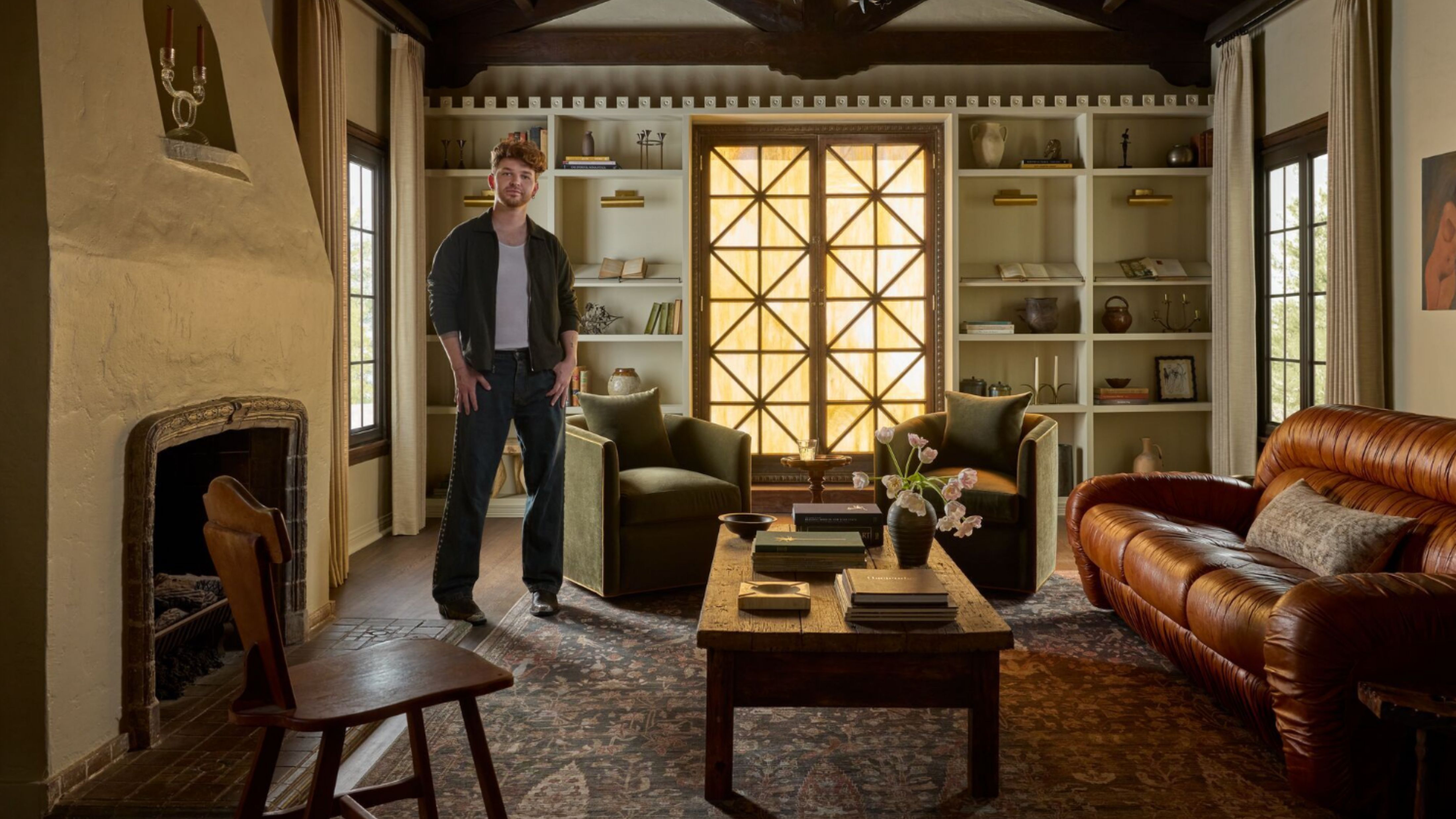 Lone Fox's Drew Michael Scott Drops a Vintage Capsule with Joon Loloi (And Some Seriously Good Tips For Thrifting Antiques)
Lone Fox's Drew Michael Scott Drops a Vintage Capsule with Joon Loloi (And Some Seriously Good Tips For Thrifting Antiques)Sourced straight from one of the world's biggest antique shows, Drew shares how to stay sane, cut through the noise, and score what you actually want
By Julia Demer Published
-
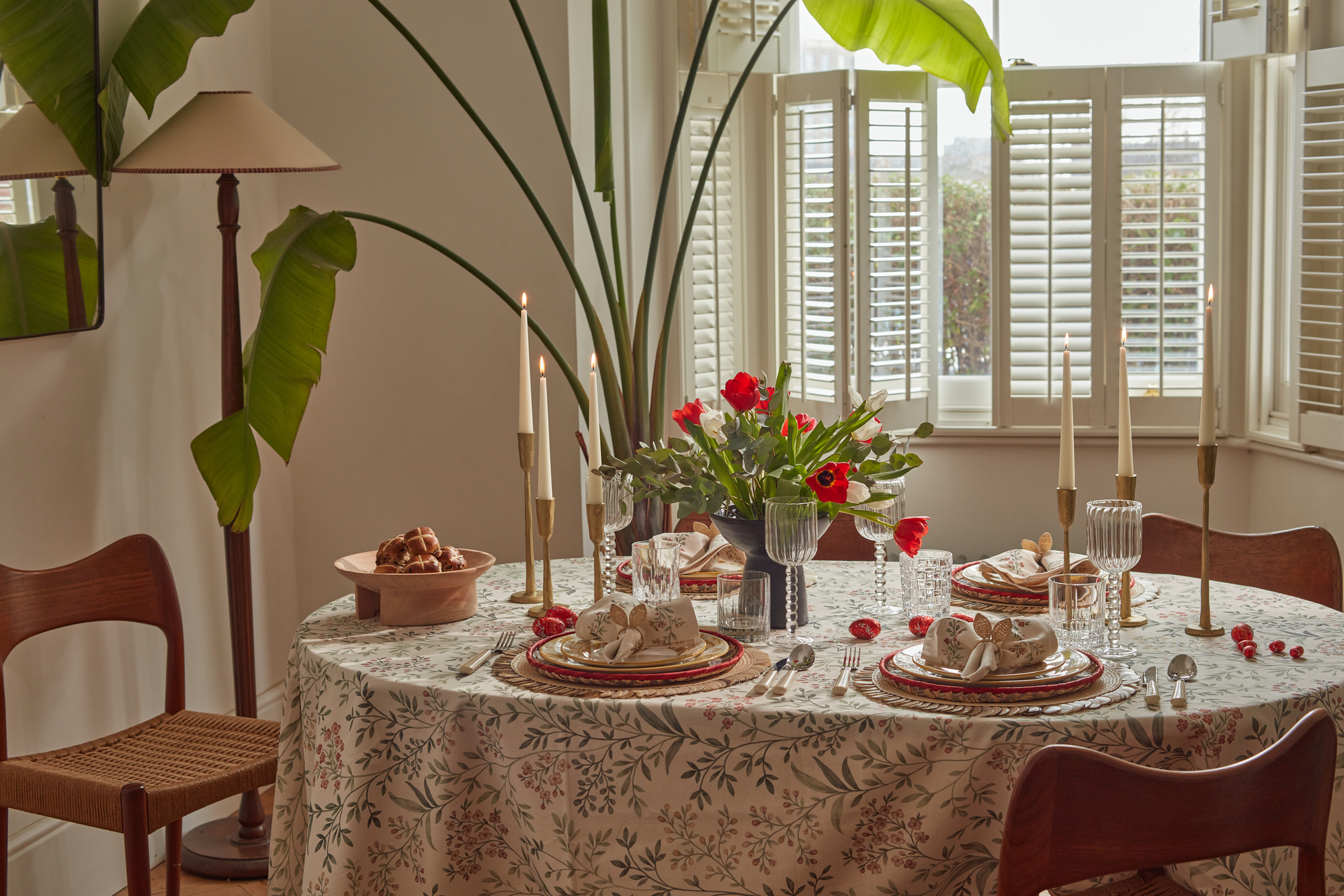 9 Easter Table Decor Ideas to Plan Now for Perfect Tablescapes This Season
9 Easter Table Decor Ideas to Plan Now for Perfect Tablescapes This SeasonFrom centerpieces and color schemes to tablecloths and seasonal themes, let these designer-approved ideas inspire your table styling this Easter
By Lilith Hudson Published
-
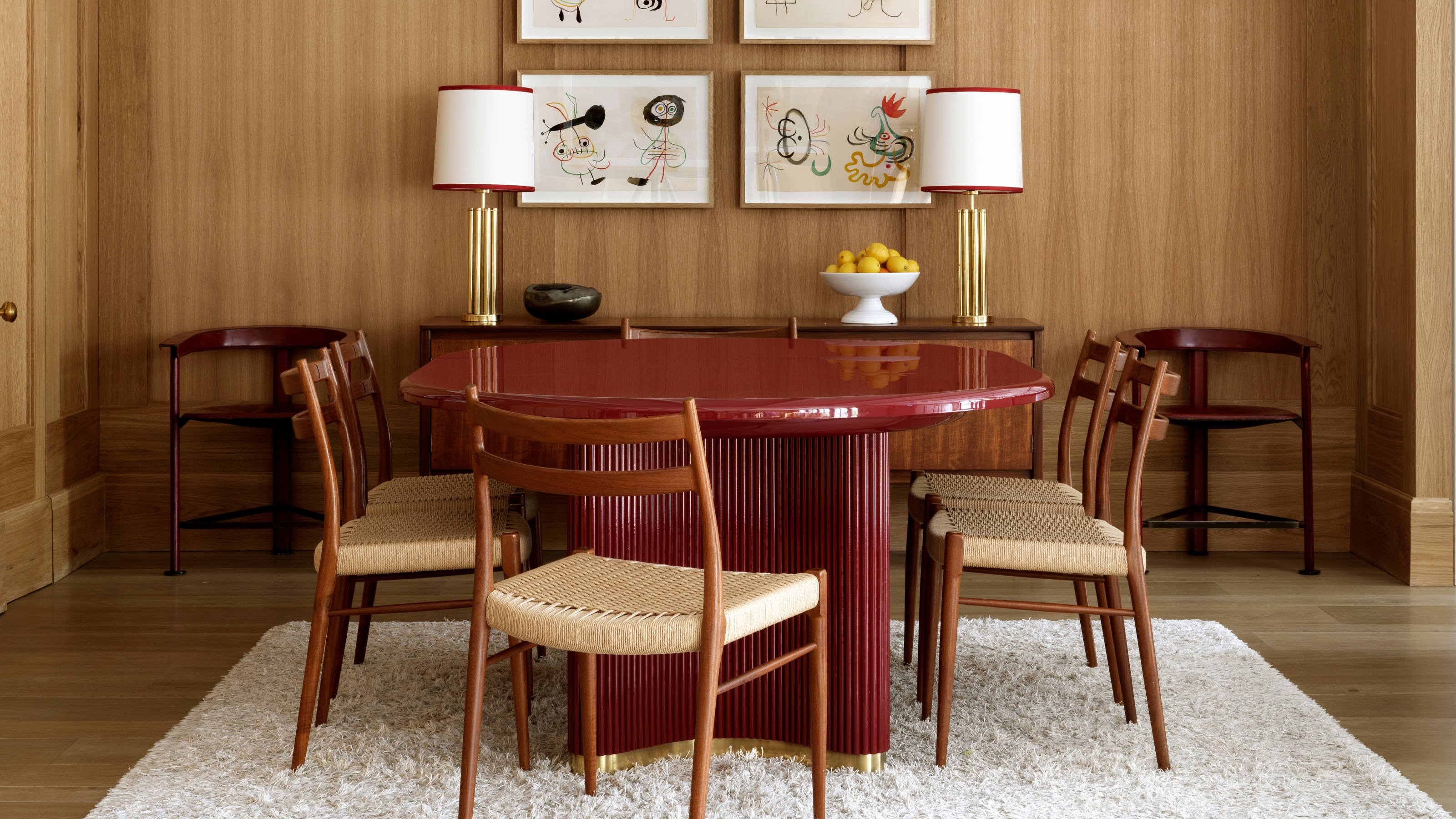 The 'Red Table Trick' Is the Easiest and Most Expensive-Looking Trend to Hit 2025 So Far
The 'Red Table Trick' Is the Easiest and Most Expensive-Looking Trend to Hit 2025 So FarA red dining table makes a seriously stylish statement; the beloved pop of red trend just got an bold and expensive-looking upgrade
By Olivia Wolfe Published
-
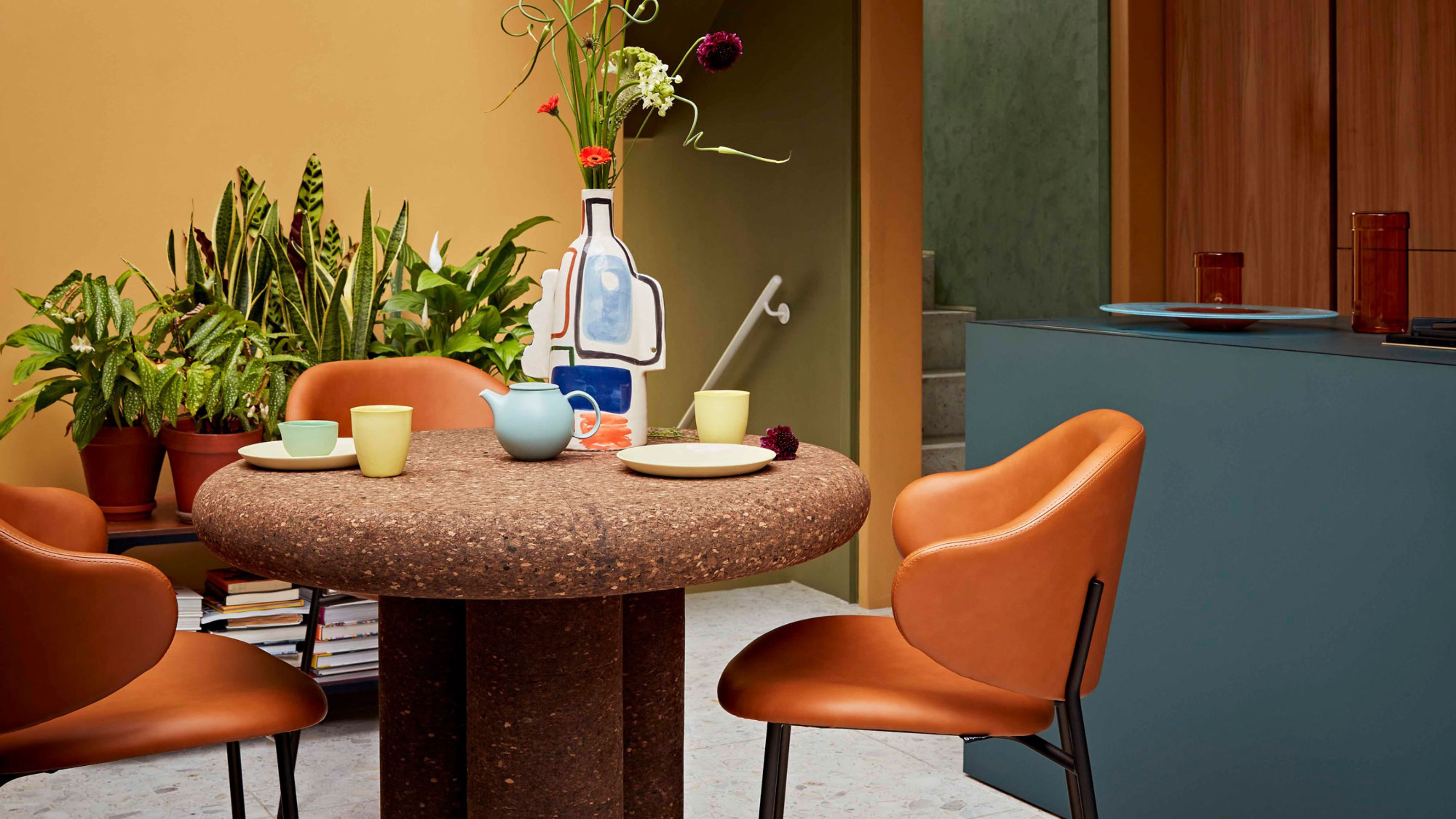 Cork Is the Cool, Sustainable, and Surprisingly Chic Material We Can't Stop Furnishing With Right Now
Cork Is the Cool, Sustainable, and Surprisingly Chic Material We Can't Stop Furnishing With Right NowIn honor of Earth Month, we’re toasting to cork... furniture, that is
By Julia Demer Published
-
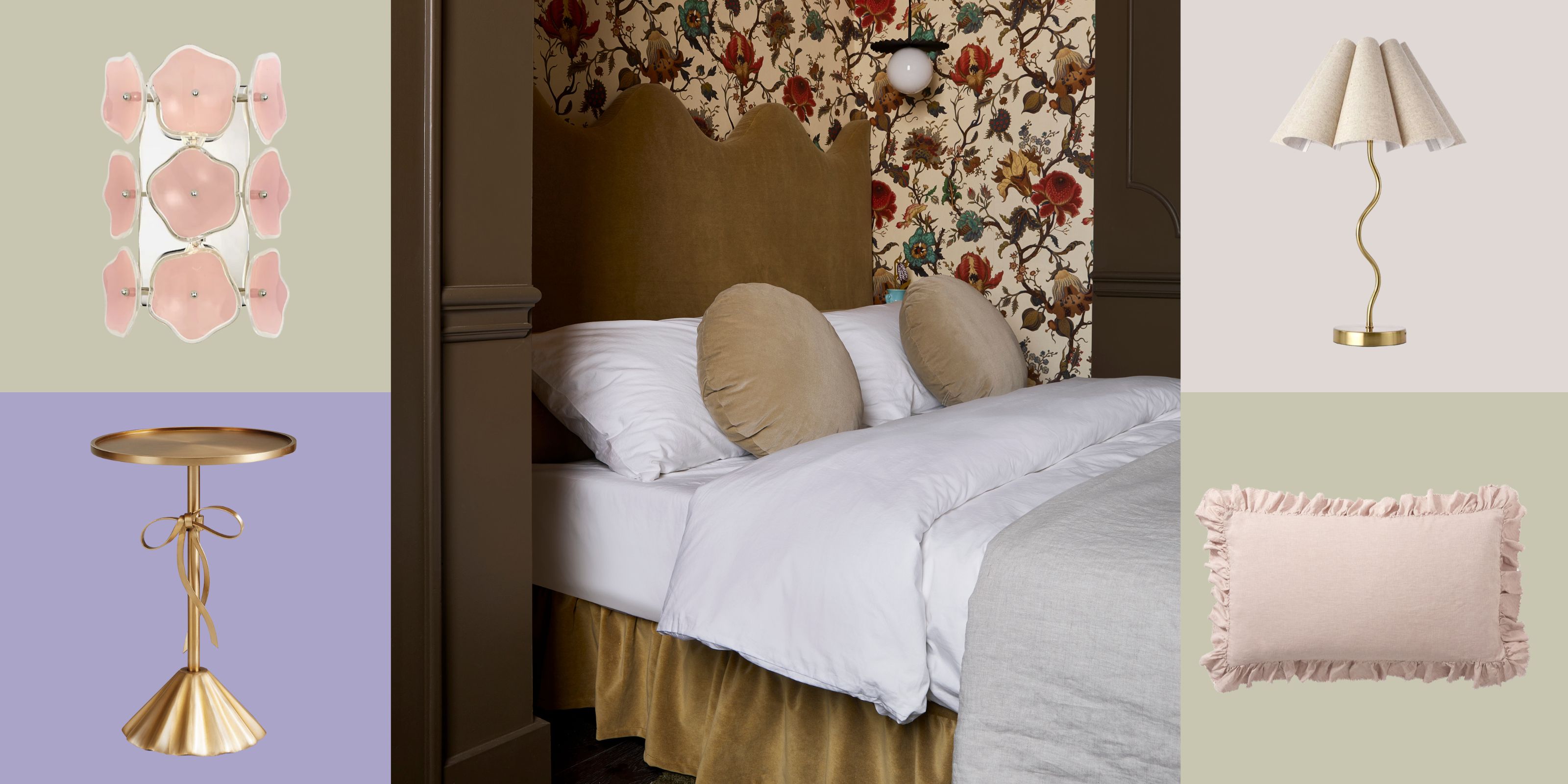 The Coquette Aesthetic Is Still Going Strong in Homes in 2025 — But Now It's Charming, Whimsical, and Has Modern Flair
The Coquette Aesthetic Is Still Going Strong in Homes in 2025 — But Now It's Charming, Whimsical, and Has Modern FlairA designer weighs in on how you can make the classic coquette trend feel modern while still retaining its whimsical elegance
By Devin Toolen Published
-
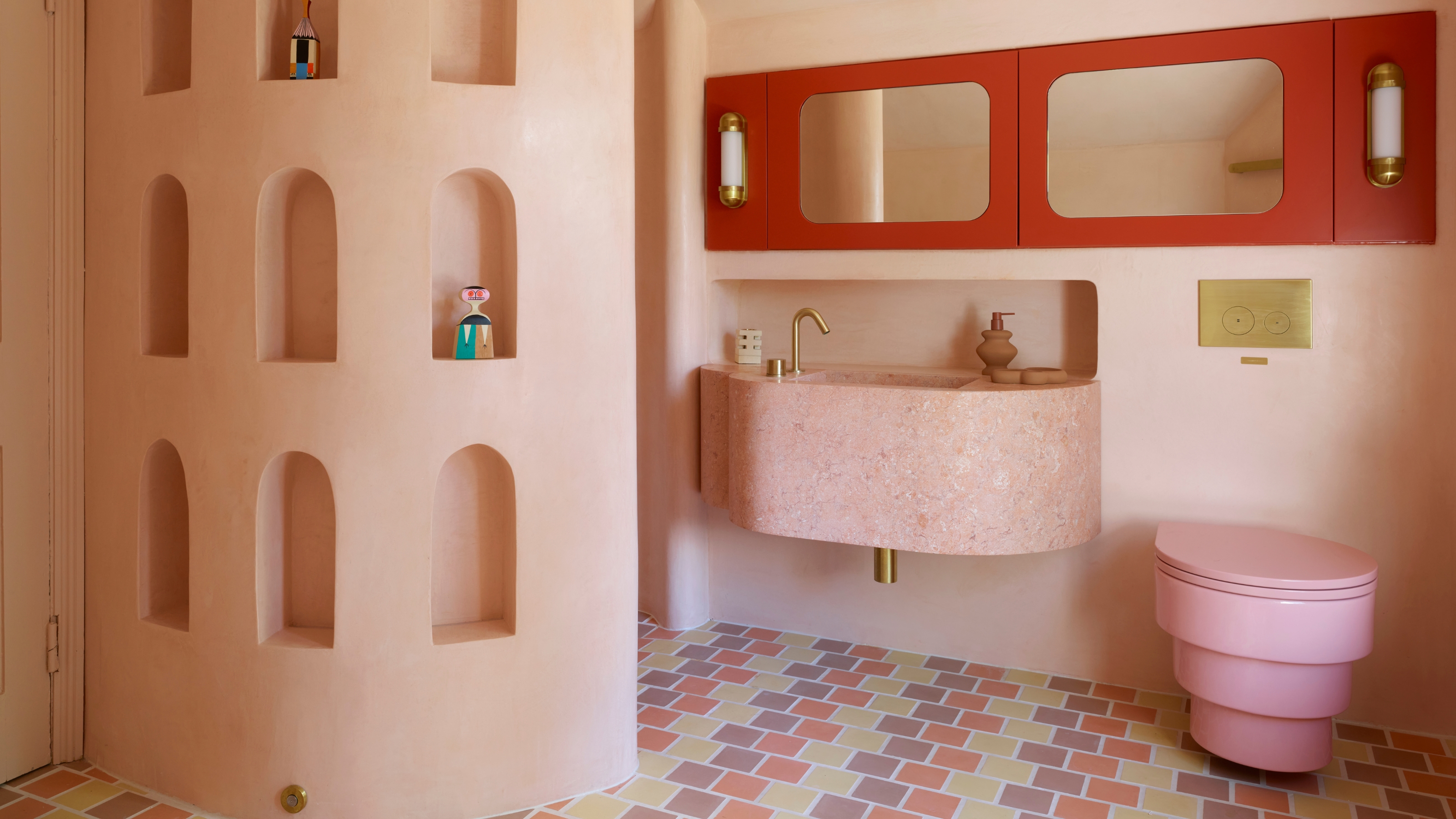 Spotted in the Coolest Bathrooms of the Moment — This Colorful-but-Divisive Trend Is the Idea You'll Either Love or Hate
Spotted in the Coolest Bathrooms of the Moment — This Colorful-but-Divisive Trend Is the Idea You'll Either Love or HateSee you later, sterile white. This playful plumbing trend is bringing color back to our bathrooms in an utterly unexpected way
By Olivia Wolfe Published
-
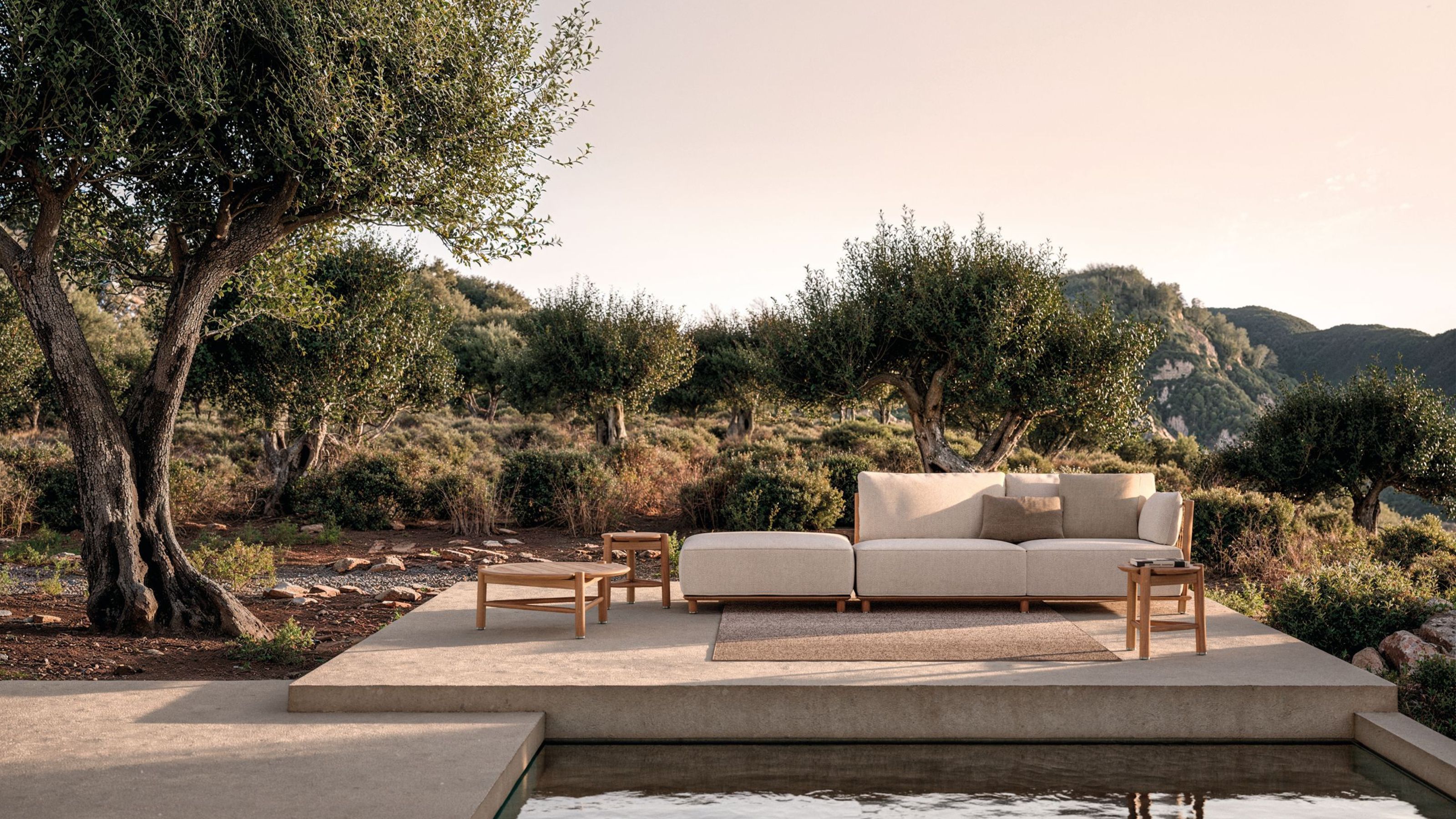 The Biggest Outdoor Furniture Trends for 2025 Embrace the Natural World, White Lotus, and a Touch of Whimsy
The Biggest Outdoor Furniture Trends for 2025 Embrace the Natural World, White Lotus, and a Touch of WhimsySofas as plush as your living room’s, tables fit for a five-star resort, and materials straight from nature — here’s how outdoor living is evolving this year
By Julia Demer Published
-
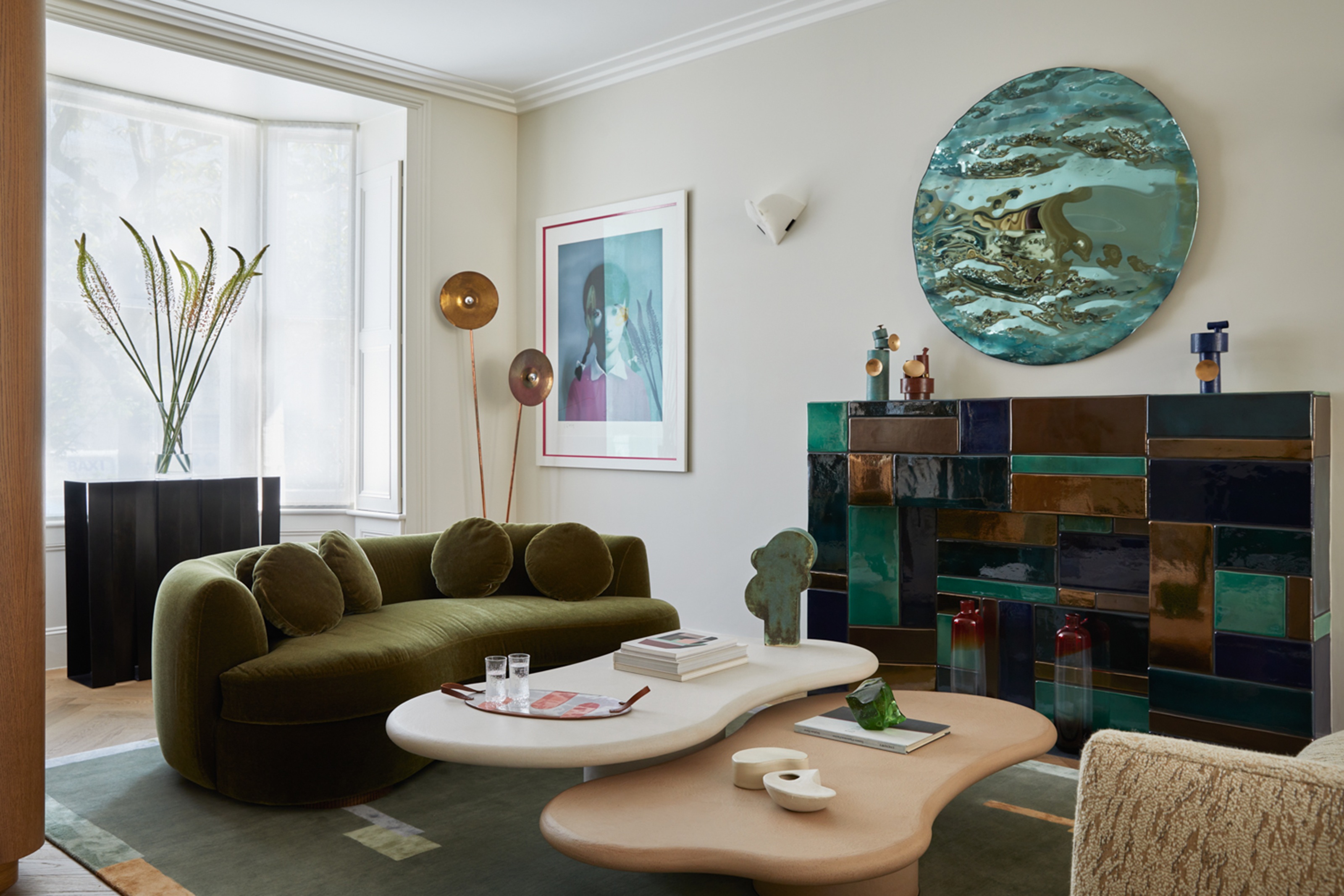 The "One Amazing Thing" Theory Could Just Be the Secret to Making Your Decorating Budget Go Further (While Making More Impact)
The "One Amazing Thing" Theory Could Just Be the Secret to Making Your Decorating Budget Go Further (While Making More Impact)What if we told you designers had found a way to control a project's spend even while elevating the final result? This new trend does just that
By Pip Rich Published
-
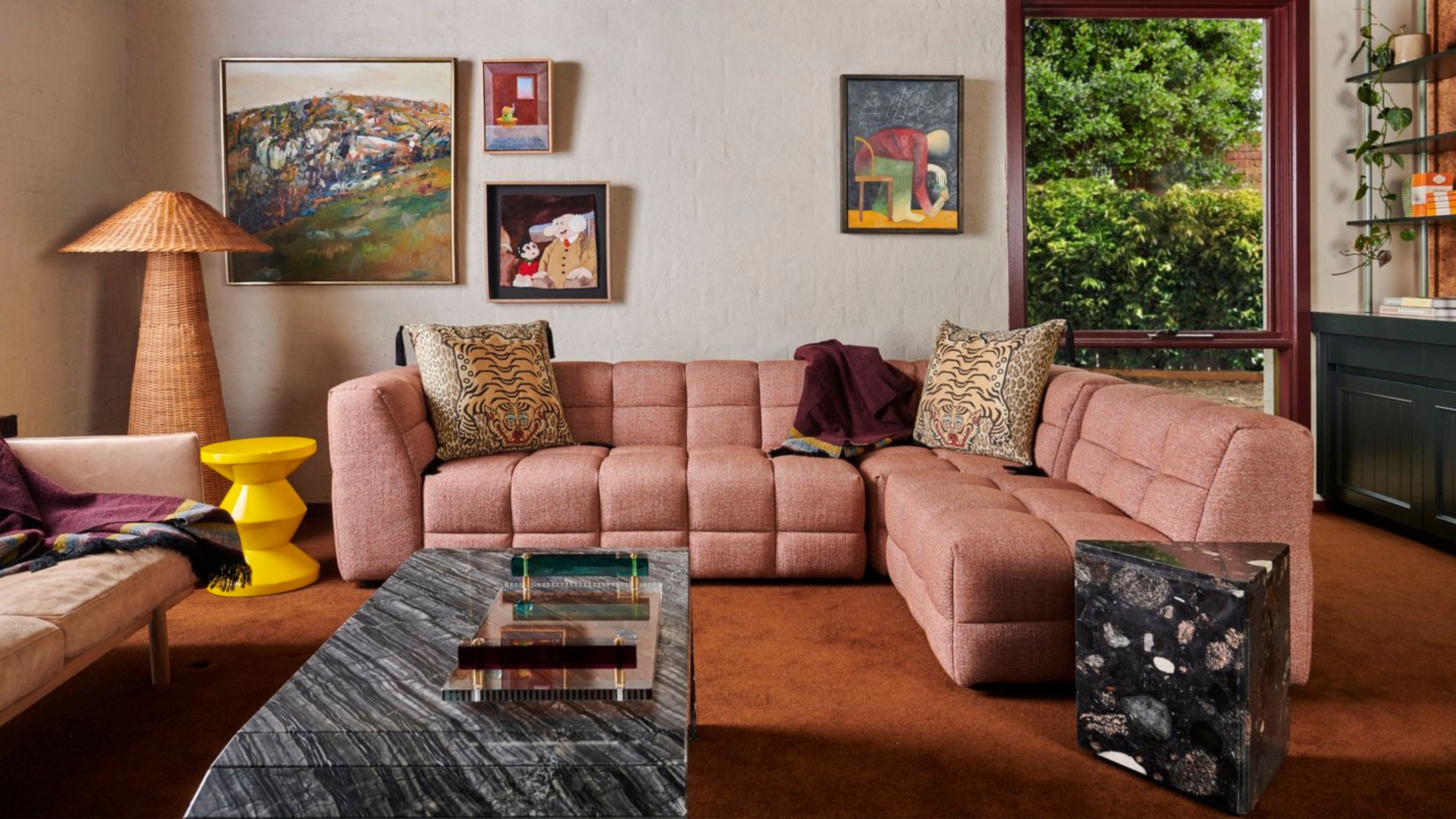 Carpets Used to Give Me the Ick, but This Bold New Style Makes Me Think They're the Next 70s Design Detail Due for a Revival
Carpets Used to Give Me the Ick, but This Bold New Style Makes Me Think They're the Next 70s Design Detail Due for a RevivalI've always had visions of ripping up wall-to-wall carpets, but now I'm thinking about actually installing them — what gives?
By Emma Breislin Published
-
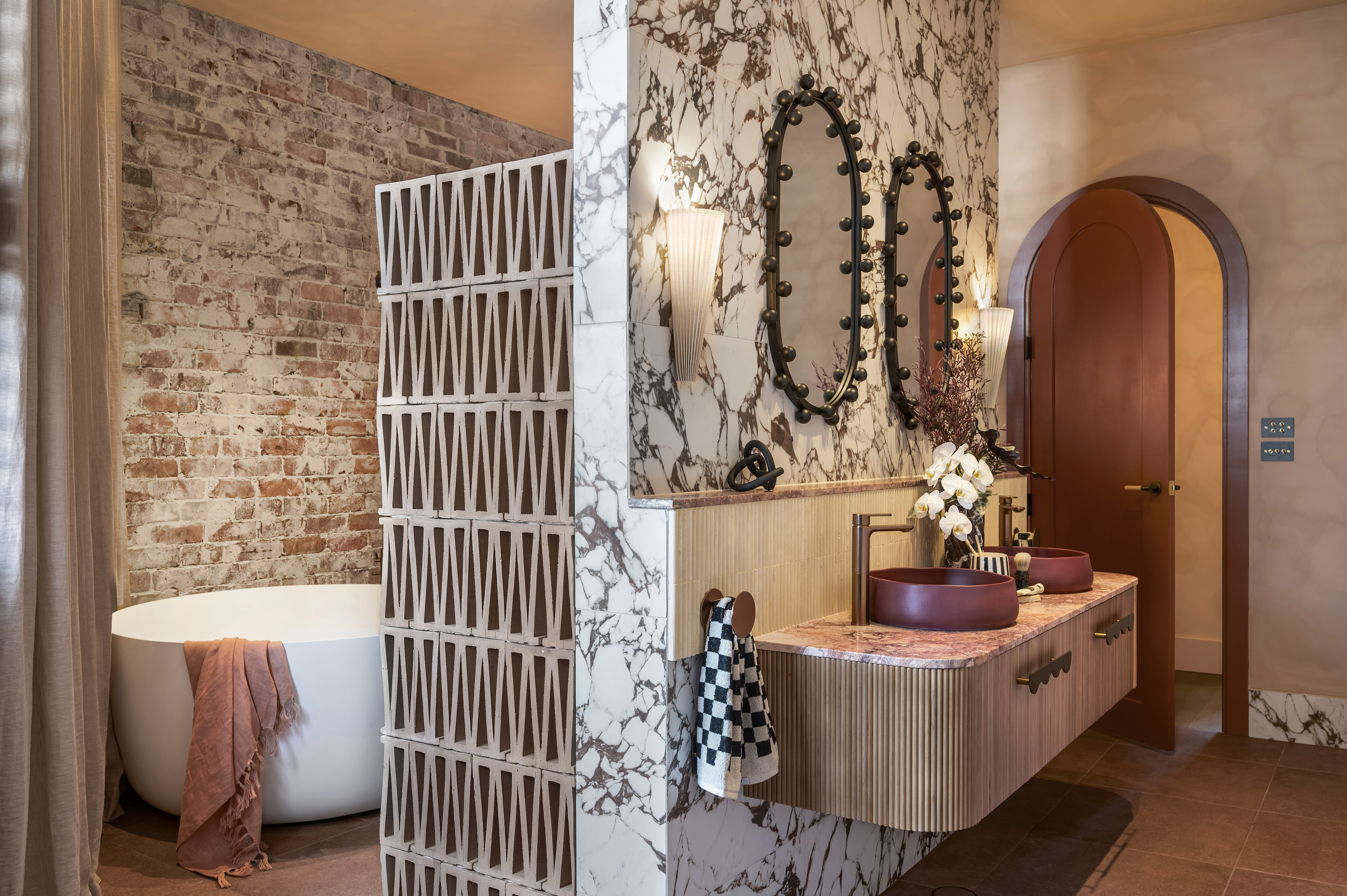 This 'Modern Breeze Block' Trend Is Everywhere Right Now — From Kitchen Islands to Room Dividers
This 'Modern Breeze Block' Trend Is Everywhere Right Now — From Kitchen Islands to Room DividersI've spotted this V-shaped breeze block popping up as the cool finish in kitchens, living rooms, and even bathrooms right now. Here's what you need to know
By Luke Arthur Wells Published
